The Most Boring Grocery Store.
Also: More Kroger-Albertsons Merger Shenanigans.
Discontents: 1. The Most Boring Grocery Store (In Austin). 2. The Latest Kroger-Albertsons Merger Shenanigans. 3. Tunes.
“What does the money machine eat? It eats youth, beauty, spontaneity, and above all, it eats creativity. It eats quality and shits quantity.”
-William S. Burroughs
1. The Most Boring Grocery Store (In Austin)
Let’s get something straight. Austin is not weird. “Keep Austin Weird”? That is just good marketing. I lived in Austin for almost 20 years. Shallow nostalgia for a mythologized, pre-gentrified, pre-Covid time when the Texas metropolis harbored a disproportionate share of cosmic cowboys, restless students, government apparatchiks, hippies, artists, intellectuals and musicians? Long gone.
Austin is very normal these days. Traffic jams, music festivals dominated by Top 40 artists, influencer circle jerks masquerading as cultural touchstones (*cough cough* South By), extreme heat in the summer and freakish cold snaps in the winter, lots of tech money and lots of well-paying tech jobs. Elon Musk and the Tesla Gigafactory. A burgeoning low wage service sector with paltry union density and job security. Elon Musk’s ego. Polished, glistening new highways for the fleets of Rivian/Lucid/Polestar EV’s speeding by dozens of giant cranes building a sunkissed-Blade Runner-esque downtown that is adding skyscrapers faster than the capacity of water and electric utilities can handle. The seat of Texas state government, in a dome taller than the U.S. Capitol building, currently deep red. Plenty of beautiful green spaces and parks, freshwater pools, and a hike and bike trail alongside an algae bloomed, dammed river. Way too many bars, just enough taco stands (tacos being the ideal breakfast food), and even a major league soccer team (also green, Los Verdes).
And food system wise, Austin is well regarded as a foodie destination. Amazing restaurants, farmer’s markets, those ubiquitous tacos, barbecue, burger joints. But Austin is also super fragile in terms of its food supply. The deep freeze of 2021 broke the city’s supply chains. Over 99% of food consumed in Austin is imported from elsewhere, less than 1% is grown locally. The city typically has less than a few days of food on hand at any given time. Between rising land costs, erratic weather and the sheer brutally hard work of farming, there are not many courageous souls growing food at scale in the Austin area. And a lot of that tracks with the grocery sector and how consolidated it is.
The Austin grocery scene is definitely not weird.
Sure, Austin is the birthplace of Whole Foods. Austin has its own food cooperative, the venerable Wheatsville. But Austin grocery is dominated by HEB, a Texas-based chain that is more or less a secular religion for local shoppers. HEB’s success makes Austin one of the most concentrated grocery markets in the U.S., and definitely the most concentrated of any big city.
HEB owns at least 50% grocery market share in the Austin metro.
That is 50 cents of every grocery dollar going to the Butt family’s private empire. No wonder, though. HEB seems to win best American grocery chain of the year pretty often. HEB executes really well as a retailer, with great prices, selection, quality and many large, beautiful stores. They purchase a shit ton of Texas grown food, mostly industrial scale produce, meat, dairy and commodities from all over the vast state, far beyond the bucolic mythologies of Austin foodie culture. And HEB is not a terrible place to work. Employees stay with them for decades, own company stock and tend to be helpful and attentive. The stores are community fixtures. They have successfully boxed out Walmart, Kroger and most other mass market chains from gaining a real foothold in the U.S.’ fastest growing metro area. HEB is what I have referred to as a “benevolent monopoly”. It is nearly impossible to resent their dominance. Want to cross a red line in Austin? Insult HEB in polite company.
After HEB in market share is Walmart, with 25%. The math means that ¾ of Austin grocery sales are Butt family or Walton family revenue. Must be nice to be in one of those trust funds.
So, Austin grocery. Not weird. Sure, there are also plenty of Eastside bodegas and carnicerias and a few H Mart’s and assorted East Asian/South Asian grocers. There are precious, overpriced shops like Royal Blue and Thom’s. But when it comes to the grocery sector, especially compared to other major metro areas like NYC, Philadelphia, Seattle or the Bay Area with their vibrant, diverse cooperatives and independent grocers, Austin is really fucking boring.
There is one Austin grocery chain that maxes out the boring.
Peak boring if you will. A grocery chain that has so little identity that its lack of identity is its core strategy. It counts higher local market share than even homegrown Whole Foods. It is owned by one the three largest grocery chains in the U.S., Albertsons. And ironically, it is the sister company to the chain that inspired Whole Foods’ original moniker, “Saferway”. It has a single word name, also quite prosaic and forgettable.
Randalls.
What?
Yes, Randalls.
At around 5% market share, Albertsons’ toe hold in central Texas is a fixture in many neighborhoods and an anchor tenant in a few strip malls. Big stores, wide aisles, well-lit, clean, that typical supermarket smell of floor cleaner, wet produce racks and somewhat fresh meat. A stereotypically broadline assortment of pretty much everything you would expect a mainstream grocery chain to stock.
Randalls. IYKYK. The name fills you with an absence of emotion. Generic. Present. Boring. There. Randalls. Is there. If you live off Ben White or near Bee Caves Road, or over on the old west side, Randalls is there. Of course it makes sense to shop there if it is around the corner or up the road. Your grandma who lives in Westlake, has a backyard pool, wears Tecovas and sips Shiners probably shops there. Her neighbors do too. I am not judging. When you are running errands and it is on the way and just too far to stop into HEB or the Wheatsville on South Lamar, you can go to Randalls. It is right there.
Randalls is functional too. They have a real pharmacy. They have a Quest Labs (for when you need to drop off your blood tests). You can vote there on Election Day with your neighbors and then pick up some essentials. The prices are on the high side, punctuated by thousands of deep sale prices too good to pass up. Textbook hi-lo pricing strategy, underwritten by billions of dollars in supplier trade spend, slotting fees and marketing/ad dollars. Grocery 101.
Randalls’ charmlessness is not unique.
It is also a key attribute of mainstream, conventional grocery. Replace Randalls with any number of the market-share leading yet middling banners of the three largest conventional supermarket chains (Kroger, Albertsons, Ahold-Delhaize). Stop ‘N Shop. Smith’s. Acme. Tom Thumb. Hannaford. Shaw’s. QFC. Serviceable. Adequate. Interchangeable. Boring. This isn’t to say the big three grocers don’t have some spectacular banners, Kroger (banner) dominates the lower Midwest and upper South because they execute at an HEB level. King Soopers (Kroger) in Denver is among the best supermarket chains in the U.S. Fred Meyer (Kroger) still has some great locations in the Northwest. King’s (Albertsons) in New Jersey is still a solid mid-upscale shop. Food Lion (Ahold), like its namesake, is a beast, ably squaring off with Publix, Aldi and Lidl in the Southeast. But these are the exceptions, not the rules.
For the conventional supermarket chains who have grown through acquisition, omnichannel (“E-commerce”) development and disciplined category management and promotional strategies, selling the right assortment to their customers at the right price (particularly as they collectively edged up prices the last few years), this is all about domination through sameness. Ubiquity and consistency. No food system change here. The present production paradigms are safe and sound. A reminder that supermarkets are the focal point of industrial agribusiness and chemical intensive food production, where the rubber meets the road of mass consumption. All those farmer subsidies and Bayer-friendly agrichemical regulations. Factory farms and monocultures. Where the market share concentrations of dozens of categories by Kraft Heinz, Pepsico, Dr. Pepper Snapple Group, Coca-Cola, Nestle, Conagra, etc., are a leverage point for revenue extraction, not something to be shunned or disaggregated. Corporatism is nothing to be feared. It’s just too boring. It will numb and stupefy instead.
Randalls illustrates this peak boredom in a couple ways.
The product sets are dominated by a plethora of Albertsons’ private labels (“Goodness you can taste”, even the marketing cliches are cliche). The packaged cheese wall is Lucerne. Canned beans are Safeway Organics and Signature Select. Open Nature, the grassfed beef. Packaged organic produce with the colorful Safeway O logo, algorithmically determined placement alongside more numerous conventional products. The pattern is repeated throughout the store. These are not insignificant brands.
Albertsons’ private label portfolio brings in over $16 billion in annual sales.
Safeway Organics is one of the largest organic food brands in the U.S. and gave Whole Foods’s 365 a nice scare when it launched many years ago. Signature Select and Lucerne are likewise ubiquitous and if you shopped in any of the dozens of supermarket banners owned by Albertsons, they probably made up a significant share of your purchases. These brands are priced very competitively, comparable to HEB and Walmart, are relatively high quality and have eye catching design and premium shelf placement. Only discerning grocery nerds would know they are owned by the grocer. But who really craves Lucerne? Who argues over evening cocktails regarding the relative merits and attributes of Signature Select? If you weren’t shopping in any Albertsons banner like Randall’s would you even give any of these products a second thought? That is why they are successful.
Randalls’ other main merchandising tactic is broad placement of the aforementioned mainstream brands, typically flanking the private label products throughout the aisles. Big Food dominates the aisles. Right up alongside those Lucerne cheeses is a nice wall of Sargento’s. Don’t like Safeway O? Plenty of Bush’s Beans to choose from. Coke. Sprite. Big Red. Dannon, Yoplait. DiGiorno. Bubba Burger. Doritos. Lay’s. Oreos. Triscuit. Clif Bar. An eight foot run of the “blue box”, Kraft Mac ‘N Cheese, flanked by a light smattering of Annie’s, Goodles and Banza.
A monoculture of CPG, an illusion of choice despite the visual abundance.
A sea of yellow tags, sale prices running in 2-3 week cycles, funded by the accrual based accounting of supplier trade dollars, all negotiated out of Boise. Yes, Boise, as in Idaho.
Albertsons had courageously stayed decentralized for many years, even as rivals like Meijer, Whole Foods and Kroger bureaucratized and centralized their merchandising operations. Only recently, as investors like Cerberus and Apollo have clamored for payouts funded by sales growth, lower G&A and higher margins (and hence, higher prices), has Albertsons centralized most purchasing operations into Boise.
There is no local forager at this Randall’s scouring Central Texas farmers markets and roadside stands for the coolest mom and pop brands.
Randall’s is just one supermarket cog in a mega-region that sprawls across Texas, Arizona, New Mexico, Nevada and Utah, the size of several European countries. And even if there was a local focus, small locally-made food brands could hardly afford the slotting fees, let alone the supplier-funded discounts and ad/marketing spend that would add up to hundreds of thousands of dollars annually just to get started on shelf, and then somehow survive and thrive as a growing brand amongst the Coke’s and Pepsi’s of the world. That is not the purpose of Randalls.
It is not as though Randalls does not have visibility or access to innovation. Pod Foods, a wholesale startup focused on emerging brands, would likely welcome the business. Randalls’ primary wholesaler is KeHe, an employee-owned, independent grocery distributor that is one of the largest of its kind in the U.S and is in a peer group with UNFI, C&S and McLane in size and assortment scope. KeHe stocks plenty of mainstream household names. They are a major supplier to HEB. They are also a huge player in the natural/organic sector. KeHe specializes in emerging brands. They started out as a specialty foods wholesaler and expanded their assortment as they acquired rivals, entered new territories and onboarded into larger retailers like Albertsons. KeHe historically has been friendlier to emerging brands as they gain placement and momentum and arguably does a better job at this aspect of wholesale than UNFI. But you wouldn’t know it by perusing the aisles at Randalls.
So the choice to stay boring is quite intentional.
It is also a living testament against further mergers and consolidation, like the $24.6 billion deal that Randalls’ parent company has been working on with Kroger. Why combine more of the same just to get a bigger more of the same? Boring is strategic, yes. Boring does quite well on its own. Boring pumps value into shareholder portfolios. No need to enable and empower more boring.
Can the FTC regulate boring? Sure, antitrust implies diversity and decentralization, keeping markets vital and heterogenous, prioritizing innovation and fairness. Randalls is just monoculture, boxed, bagged, packaged and extracted, ready to consume. This is how Randalls navigates the marketplace. Make no waves. Take no risks. Don’t attract too much attention. Don’t poke the bear (i.e., HEB in this case, but usually Walmart elsewhere). Just run the national sales negotiated through Boise. Fulfill the online orders. Extract supplier revenue. Execute the national plannograms, maybe with some market specific tweaks, like a big Topo Chico entryway display with some Siete tortilla chips for that sunny Austin vibe.
Randalls is instead a shadow of Austin behind the gleam and gloss, the dust on the boots, the cliche beneath the cowboy charm. Not weird. South By South Bored. An anchor tenant, not an innovation engine. A case study in (shrugs shoulders, waves hand) *whatever* as a business model.
Stubbornly demonstrating success means not being the best in market. At anything. Instead, Randalls is just there. And boring.
2. The Latest Kroger-Albertsons Merger Shenanigans
A Colorado judge has postponed the Kroger, Albertsons merger, granting a preliminary injunction for a hearing in August. The $24.6 billion merger had been challenged by the Colorado AG’s office as well as the FTC and another lawsuit in Washington state.
Colorado Attorney General Phil Weiser stated: “I am pleased that Kroger and Albertsons agreed to halt their plans to merge until the court rules on the state’s lawsuit to permanently block the grocery merger. This is great news for shoppers, workers, farmers, and other suppliers, who can rest assured that this megamerger will not go into effect during harvest season and while kids are headed back to school. The trial is set to begin on September 30 and my office looks forward to making the case that this merger will eliminate competition and impact food prices, jobs, and consumer choice.”
The FTC hearing is set for August 26th in Washington DC and the attorneys general of Arizona, California, the District of Columbia, Illinois, Maryland, Nevada, New Mexico, Oregon, and Wyoming are backing that lawsuit.
UFCW 7, which represents 23,000 grocery, meat packing, food processing, healthcare, manufacturing, and cannabis workers in Colorado and Wyoming, praised the decision to temporarily postpone the merger. "Our members and customers alike are concerned about potential job losses, food and pharmacy deserts, increased food prices, cost to food suppliers, and a lack of competition if the merger goes through," UFCW 7 President Kim Cordova said.
The merger has also attracted controversy because of a proposed divestiture to C&S Wholesale. C&S is a $30 billion wholesaler with thousands of retail accounts, but only operates 23 retail stores and 1 retail pharmacy. The 579 store divestiture would be a astonishing 25X increase in retail footprint. 25X.
“History shows we can't take merger promises at face value”
Jessica Crowley, UFCW Local 770 member and pharmacist at Albertsons-owned Pavilions in Los Angeles, California stated. “When Albertsons acquired Safeway in 2015 and divested about 150 stores to Haggen, many grocery stores shut down, leaving thousands jobless for months. Let’s be clear: this mega-merger will negatively impact retail workers, smaller suppliers, independent chains, and communities already facing challenges with food and medication access. C&S Wholesale Grocers’ limited experience in retail pharmacy makes the divestiture plan highly unlikely to succeed.”
“These two companies are doing very well as standalone companies, they do not need to merge to be successful,” John Marshall, financial analyst with UFCW Local 3000 and UFCW Local 324 stated. “They are growing sales, making money, and posting profits. What they should be doing is investing their profits in more staffing, higher wages, lower prices, and opening more stores to increase their market share. This merger proposal would do the opposite: it would take billions of dollars out of the grocery business and hand it over to Wall Street investors.”
C&S is also taking on this divestiture at a troubling time for their business.
C&S sales are down 21% in the last 5 years. Adjusted for inflation, this is a 41% drop.
Their credit is classified as “non-investment grade” or “junk” due to these declining sales, thin margins, high fixed costs and a fragile, concentrated customer base. Albertsons investors are seemingly betting against the merger, with the stock price down 41% since the announcement. Top insider stock ownership has plummeted from 75% of the total to 34%, meaning executives have been selling off rather than hold what shares they fear may soon be underwater.
Strangely, C&S is not getting any new warehouses from Kroger or Albertsons as part of the divestiture transaction.
They have one very small produce warehouse in Fresno, which is not large enough nor strategically located to supply the stores in Southern California. So, how is it that a wholesaler that is buying 579 grocery stores doesn’t have a regional warehouse to support said stores?
And a memo leaked in early July revealed that the COO of Albertsons was planning to leave the company to head up retail at C&S if the deal went through. How cute.
The plot thickens. Stay tuned.
3. Tunes.
Just a polite reminder that De La Soul is finally streaming. RIP Dave (AKA Trugoy, AKA Plug 2).
peace.



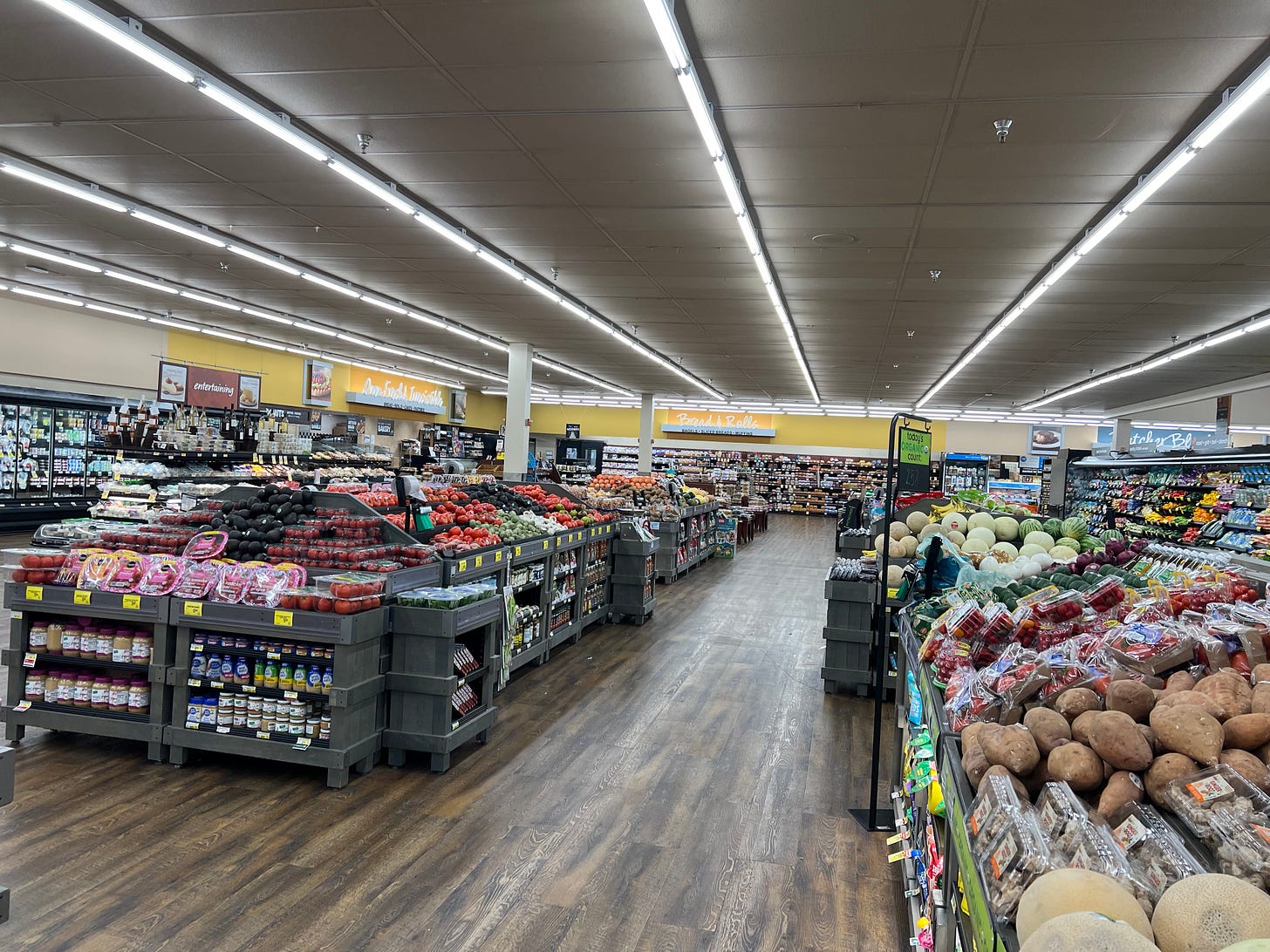
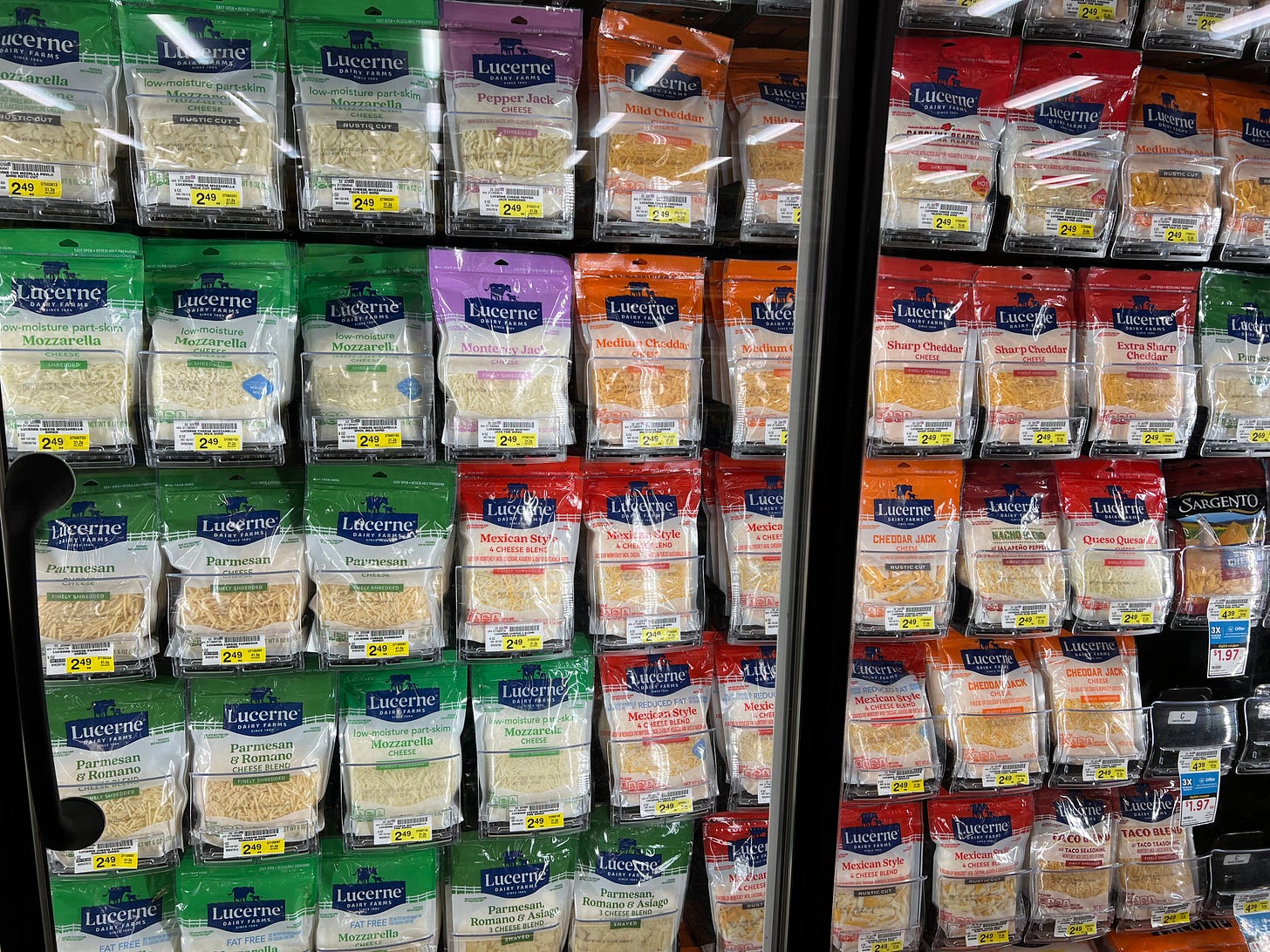


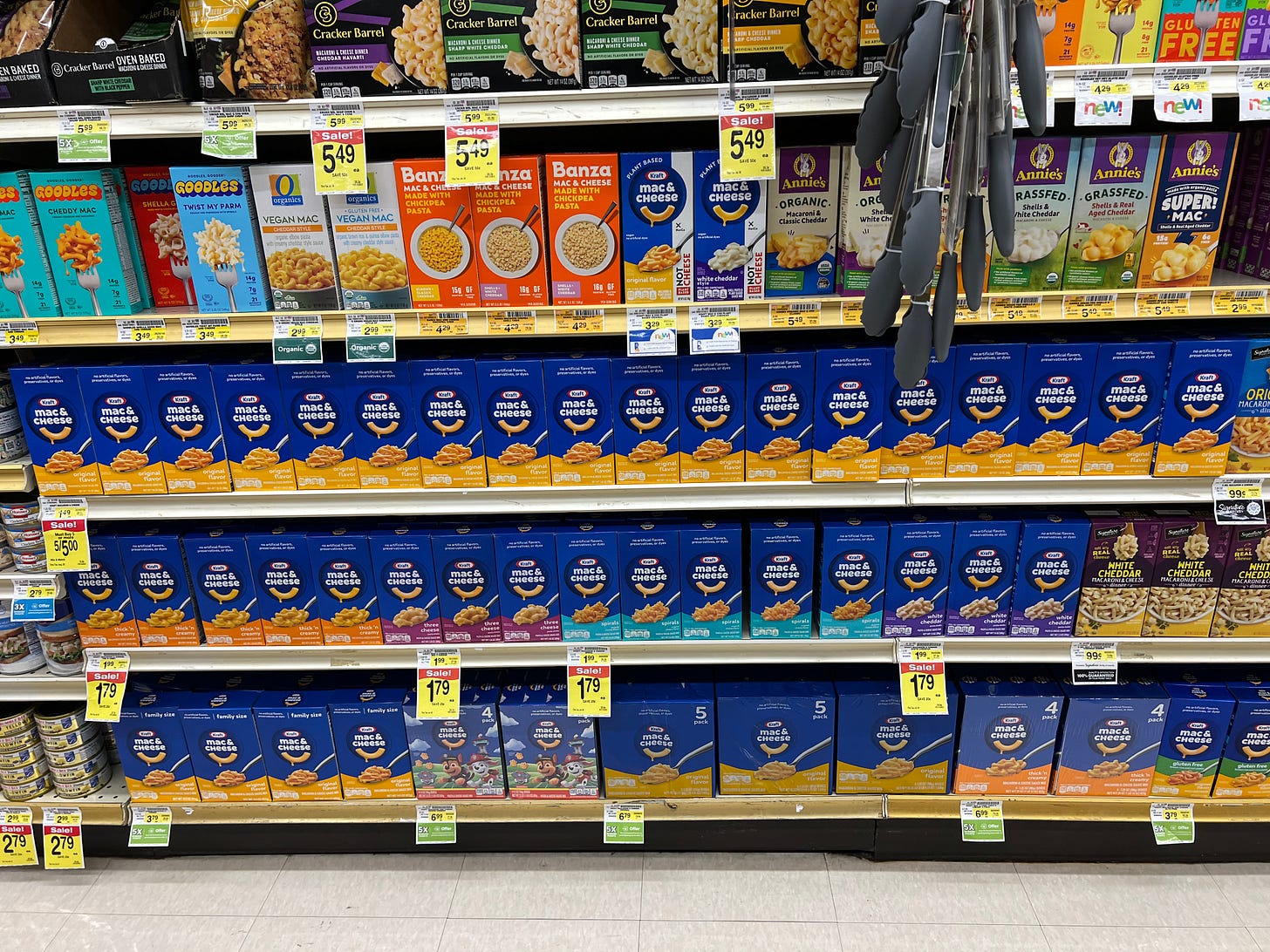
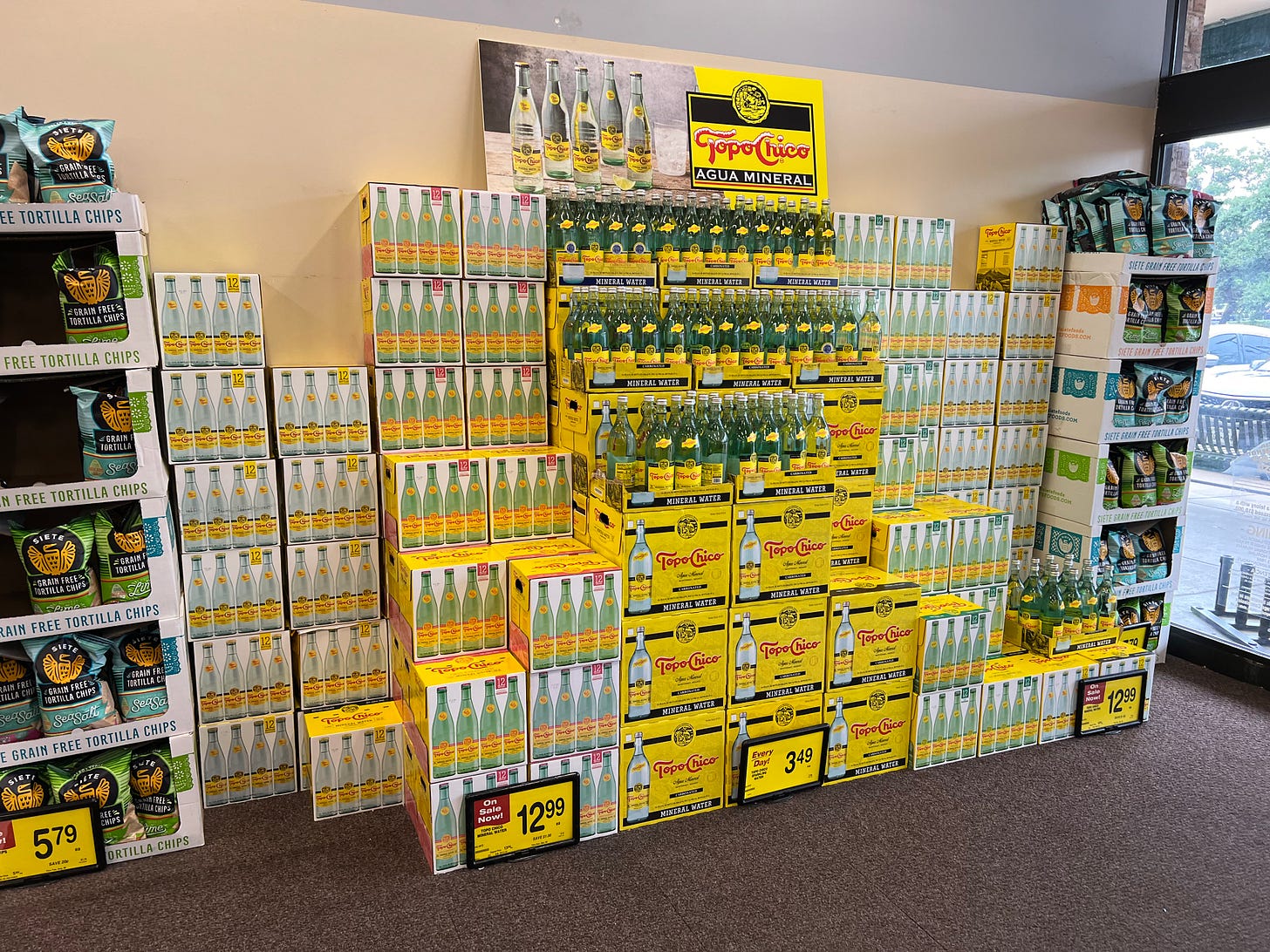
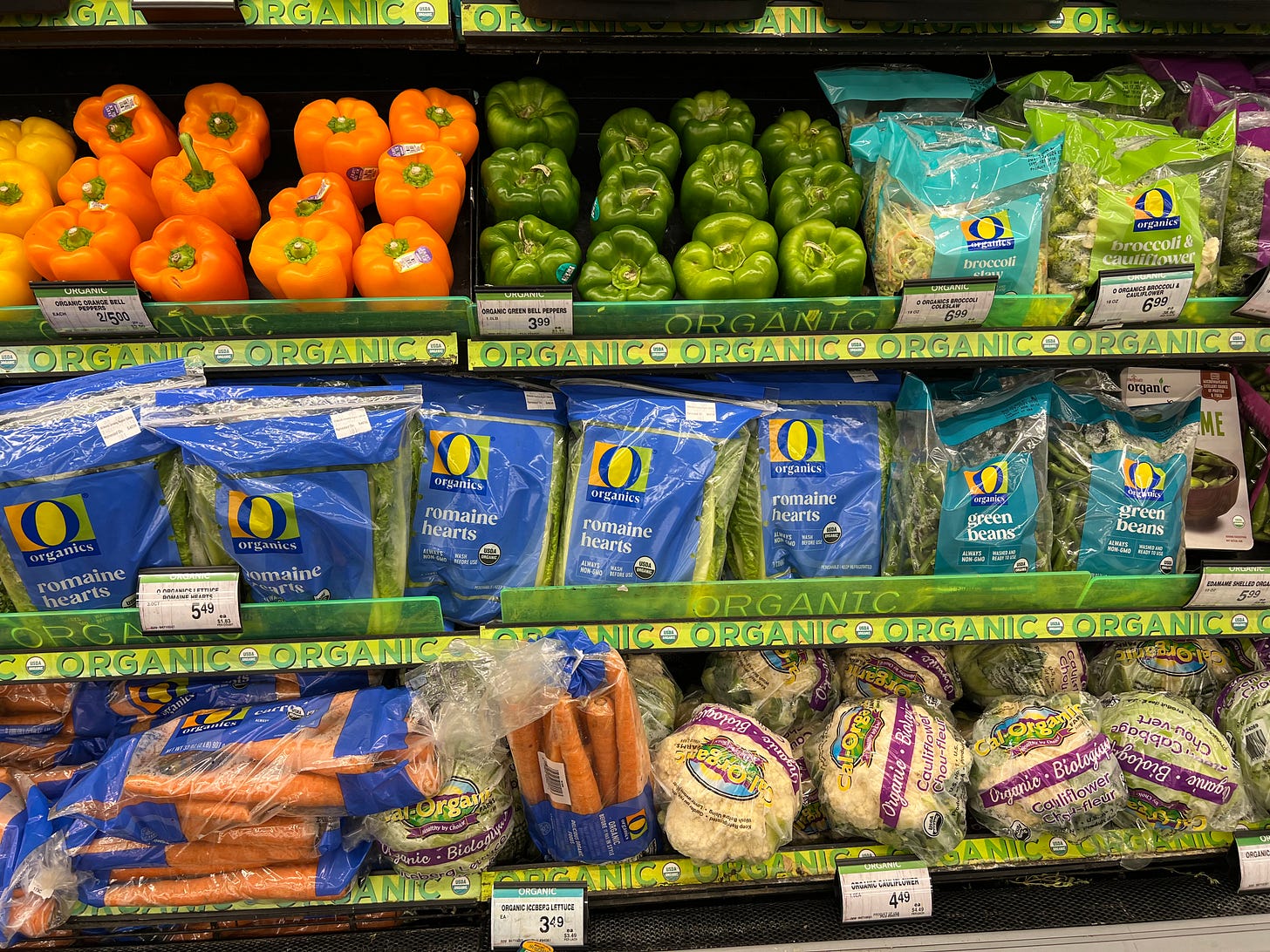
Yeah. Boring is the grocery version of tech sector enshittification. Woops sounds like another essay lol.
Jewel Foods is the Randall’s of the Chicago area. I literally go unconscious when I walk in the door, it’s so boring. We also have some interesting alt-grocers here in Chicago, especially the ones in the Latino and Asian communities with a smattering of Eastern European, but the market share here is all ‘boring’. Kroger owns Mariano’s, Safeway owns Jewel, then there’s Meijer, Walmart, Whole Foods (yea, boring now). I know people who drive 50 miles to Woodman’s just to avoid ‘boring’. State of the industry I guess….